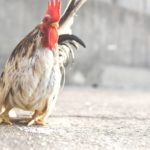

A recent article in the South China Morning Post has placed a spotlight on the rapidly expanding agritech industry in India, where there are now more than 450 startups trying to come up with ways to make the country’s farms more efficient. Agriculture currently represents about 18 percent of India’s annual GDP, yet its farmers lose approximately $13.1 billion after the harvest every year due to the country’s fragmented infrastructure and poor agricultural logistics.
To address the problem, the government of India is trying to improve internet access and digital services in rural areas, and startups like CropIn are leveraging that connectivity to make it easier to collect and analyze data about weather patterns, crop yields, and the land itself. Stellapps, meanwhile, is taking a slightly more novel approach, developing biometric technology (including facial recognition and wearables) for cows to make dairy farming more productive.
In that regard, the startup has created biometric sensors that can be placed on a cow’s leg to monitor overall health and breeding patterns. It is also using facial recognition to improve herd identification and generate better data for insurance companies, financial institutions, and other organizations in the supply chain.
“The existing ID mechanisms for cattle are either ear-tags or RF chips,” explained Stellapps co-founder Ranjith Mukunthan. “Both of these are high vulnerable for ID theft and manipulation. This system will significantly bring down manipulation as it documents bovine IDs using facial image, body structure and teeth.”
Many of India’s agritech startups are looking to expand internationally, and the interest is mutual. CropIn has the support of the Bill and Melinda Gates Foundation, while foreign organizations invested $248 million in various agritech initiatives in the first half of 2019 alone.
India has previously used iris recognition and fingerprint recognition to facilitate the distribution of government resources to the country’s rural farmers. Applying facial recognition to cattle may seem a bit more unconventional, but the technology has also been used to classify pandas and chimpanzees in the name of science and conservation.
Source: South China Morning Post
–
January 3, 2019 – by Eric Weiss








Follow Us